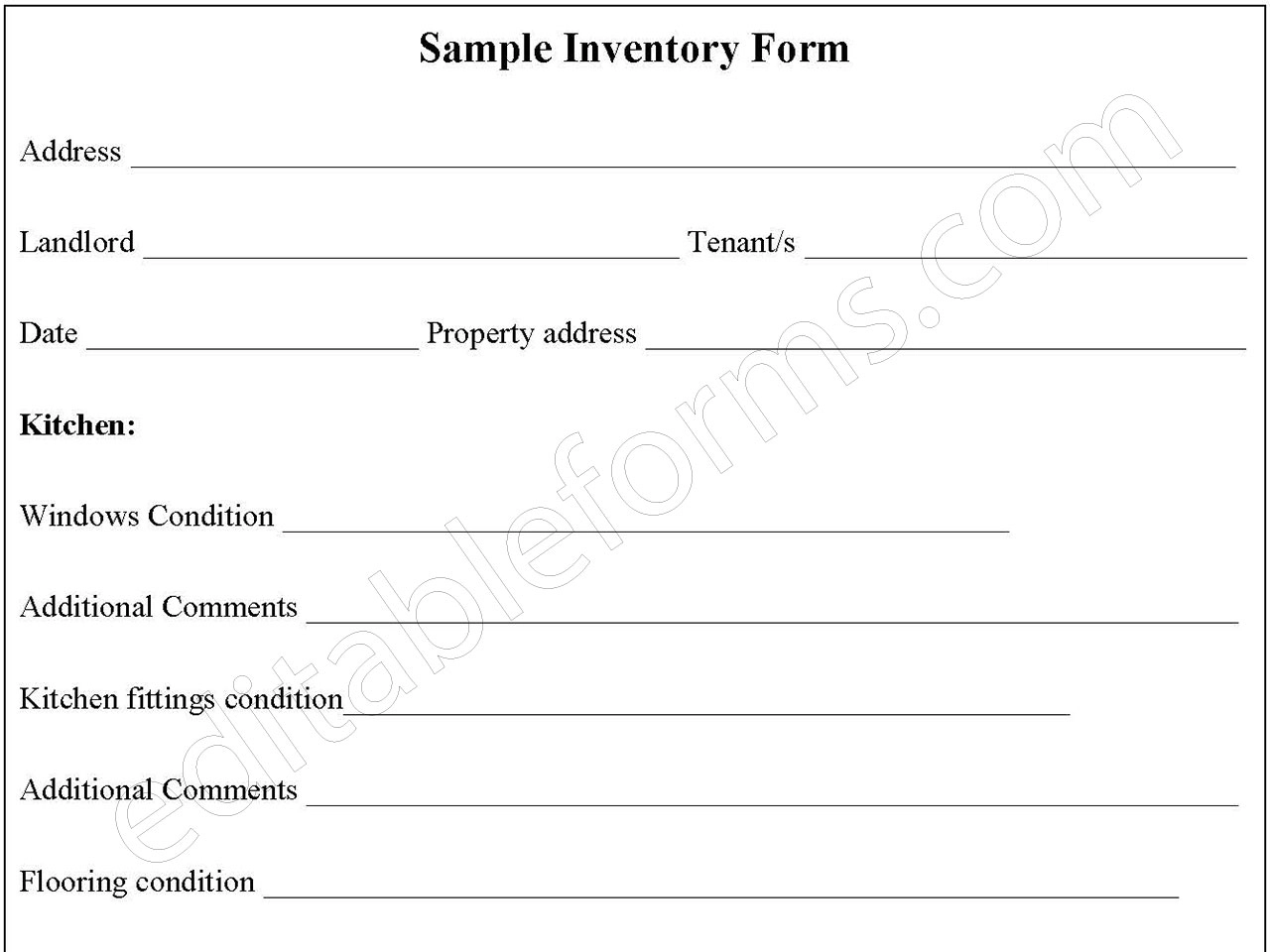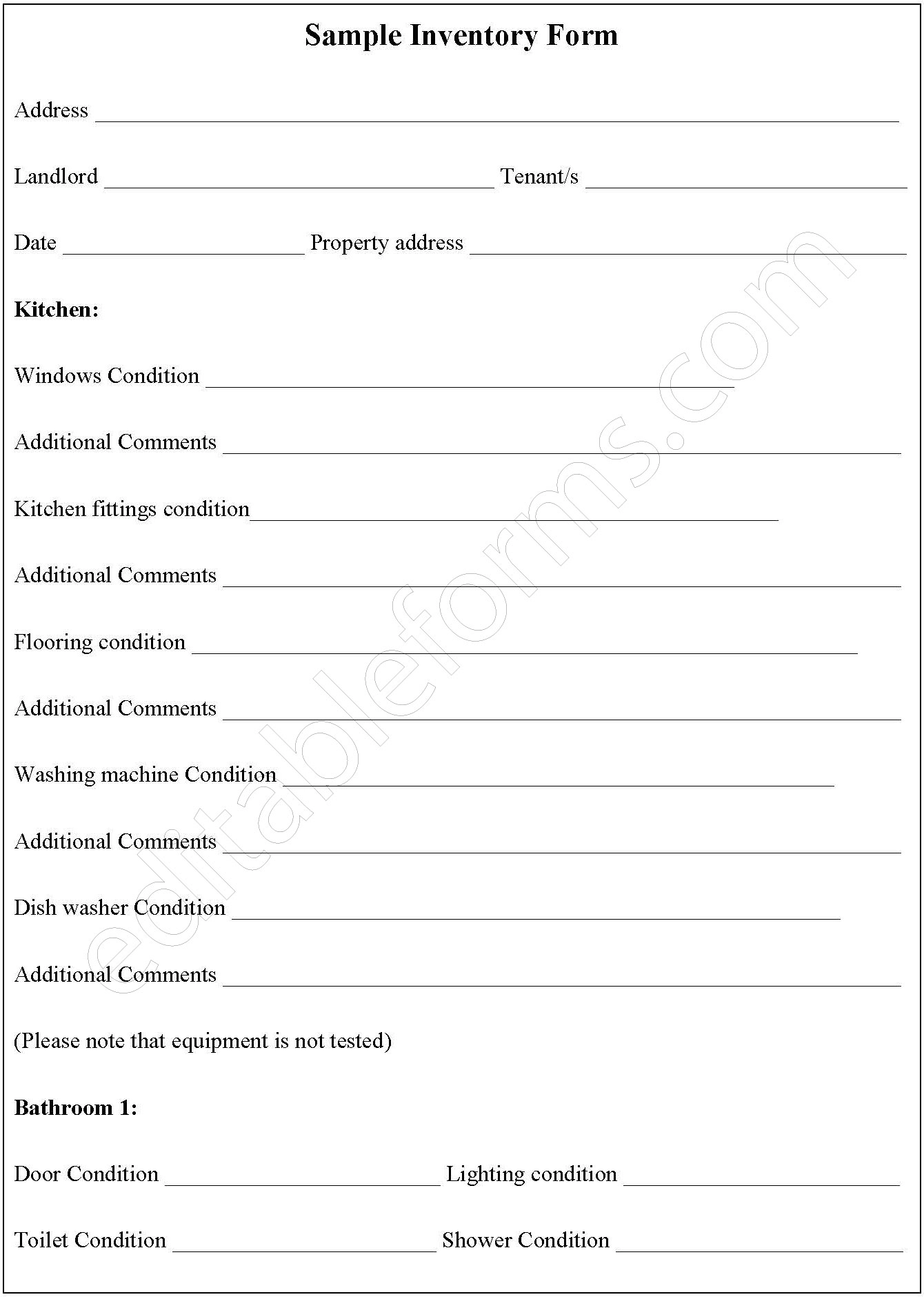An inventory is a listing of the contents on in a given department, office or even home. A sample inventory form is used to track inventory and general condition of items. The document can be used by property owners to monitor their properties condition. Below is a sample inventory form.
You can Download the Sample Inventory Form Template, customize it according to your needs, and Print it. Sample Inventory Form Template is either in MS Word or Editable PDF.
Download the Sample Inventory Form Template for only $6.54.
Buy Now: 6.54 USDIf you are having problems downloading a purchased form, don’t hesitate to contact us and include your receipt number and the exact name of the document you purchased, and I’ll email you a copy.
Features
Item Details:
The table in the template allows you to record details about each item in your inventory. Here’s a breakdown of the table’s columns:
Description:
This section allows you to specify the name or type of item.
ID/Number:
You can assign a unique identifier or number to each item in your inventory for easier tracking.
Quantity:
Record the number of units in stock for each item.
Location (optional):
This section allows you to specify the physical location where the item is stored.
Condition (optional):
You can include a column to record the condition of the item (e.g., new, used, damaged).
Cost/Price (optional):
Some templates may include a column to record the unit cost or retail price of each item.
Additional Notes:
There may be a section for additional notes where you can record specific information about a particular item, such as serial numbers, purchase dates, or warranty details.
Benefits
Improved Inventory Organization:
The template helps you organize your inventory in a clear and also systematic manner, making it easier to track the stock levels of various items.
Versatility:
The generic design allows you to customize the template to fit specific inventory management needs across different industries.
Stock Control:
By keeping track of the quantity of each item in stock, you can identify low stock items and also prevent stockouts. This allows you to order new inventory before you run out of important items.
Informed Decision Making:
Inventory data can help you make informed decisions about your business. For instance, you can identify which items are in high demand and also which ones are not selling well. This can help you optimize your stock selection and also pricing strategy.
Reduced Costs:
Improved inventory management can help you minimize the risk of overstocking and understocking. Overstocking ties up capital and also can lead to dead stock, while understocking can result in lost sales.
Time Efficiency:
Using a pre-designed template saves time compared to creating a spreadsheet from scratch.




